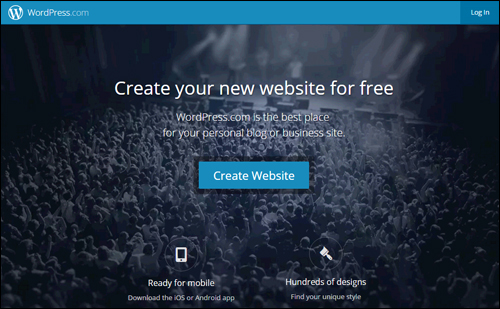
Welcome to Part Three of our Web Traffic Blueprint article series, where we show you how to automate traffic to your website using the WordPress CMS platform.
In Part 1 of this article series, we explained why using an expertly configured WordPress site is the key to automating traffic to your site …
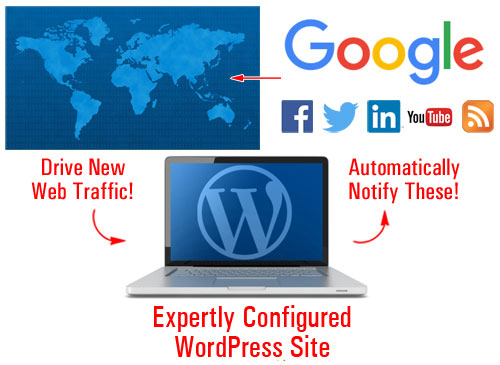
(With an expertly configured WordPress blog, all you have to do is post great content regularly to automatically begin attracting web traffic!)
In Part 2, we looked at the setup phase of the automation process. We helped you understand the best way to get started if you don’t have a web presence yet, how to set everything up if you already have a website, and what to do if your existing site was built with WordPress.
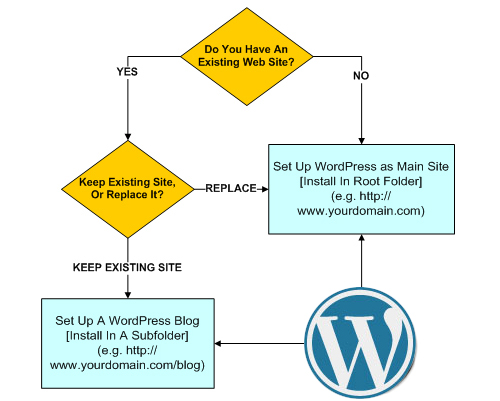
(In Part 2 we show you how to set up WordPress on your domain)
In this section, we will look at the configuration stage of the traffic automation process. You will learn how a WordPress site should be configured in order to drive web traffic automatically when you begin to add web content on a regular basis to your web site.
WordPress Web Traffic System – Configuration Phase
Finding ways to attract more visitors to one’s website is often cited by most website owners as one of the greatest challenges they face online. Businesses are becoming increasingly more competitive and are looking for any advantage they believe will get better results online.
Having the ability to automatically generate traffic on demand can provide website owners with a huge advantage over the competition. With an expertly configured website, your business has a flying start as soon as your website is launched.
Configuration Is The Difference
There is a difference between an expertly configured WordPress site and a site that has been professionally set up by a web-building expert but not necessarily configured to its fullest advantage.
Here’s one way to describe the difference:
With a WordPress site that has been expertly configured you get a web presence with an automated online business marketing process!
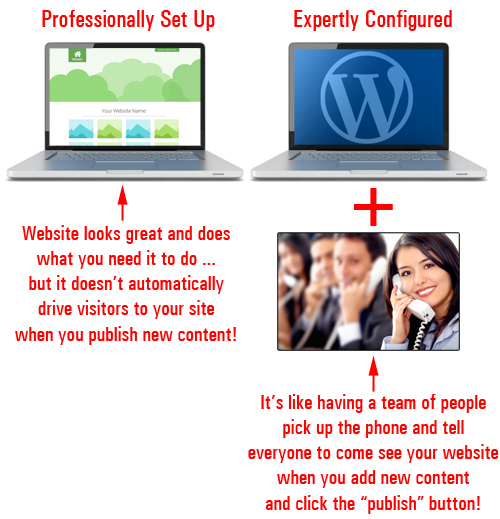
(An expertly configured website gives you a professional web presence with a built-in automated online business marketing tool!)
Not only are more steps required to build and integrate an automated online business marketing system into your website, it also takes a special type of expertise.
To illustrate this here’s an anecdote.
A Semi-True Story …
Everything is running smoothly in the gizmo workshop when things suddenly grinds to a halt.
As no one can figure out what’s gone wrong, the plant manager decides to call in an expert to try and fix the problem.
The expert arrives within 20 minutes and immediately walks towards the main control box. After staring silently at the schematics for 3 minutes or so, the expert then takes out a teeny-weeny hammer from his shirt pocket and makes a single tap near the right corner of the control unit.
Immediately, the whole workshop lights up and springs to life again.
The manager is greatly relieved as he thanks the expert, who leaves as quickly as he had arrived.
A couple of days after resolving the incident, the manager receives a service bill for $5,000.
Feeling furious, the manager calls the expert. Why did he charge them such an exorbitant fee for so little time delivering a minimal amount of work? He promptly requests an itemized invoice and hangs up.
The next day, an invoice arrives in the manager’s in-tray. Upon opening the envelope, this is what he sees:
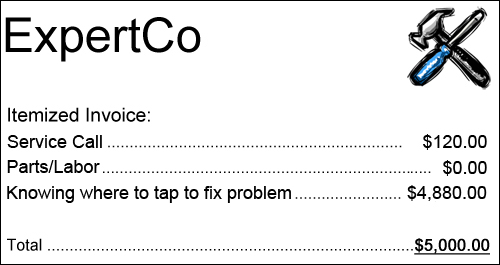
The main challenge most businesses face online is being able to drive traffic consistently to their sites.
How much money did the factory stand to lose when production ground to a halt and no one on the business had the expertise to fix it? Did the expert in our story not have every right to get paid fairly for spending years acquiring the knowledge and expertise that enabled him to quickly fix a potentially costly problem?
Similarly, if you could have your website or blog set up so all you ever had to do is publish content to it and Google, Facebook, Twitter, LinkedIn, Pinterest and dozens of other online properties would be automatically notified, how much time and money would you save?
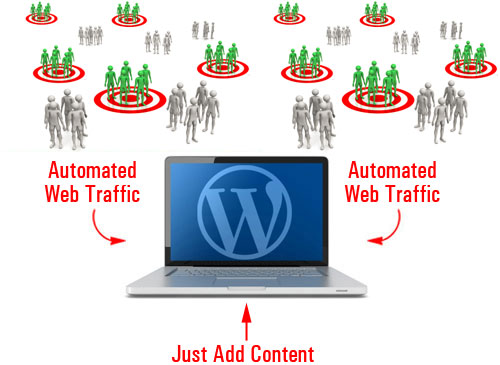
(How much better would your business be if you could automate the process of driving traffic to your site?)
Although the solution to many problems is often quite simple in hindsight, it rarely is that simple or easy.
Knowing how to expertly configure a WordPress site involves more than adding some pages with content and configuring a few basic settings. It also requires knowing where to tap! In other words, knowing things such as:
- Which plugins you need to install to get specific functionalities on your site.
- Which services you need to set up and activate to achieve desired results
- Which settings need to be configured in order to ensure that things will work to plan, etc.
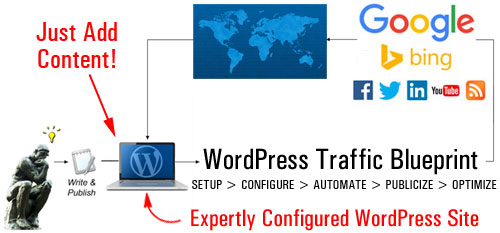
(Generating traffic automatically with WordPress is a process that requires knowledge and expertise)
Although this part of the WordPress traffic automation system may not seem so technically difficult, it can be quite complicated. It’s not as easy as installing and configuring a piece of software, clicking on a button or two … it’s all this and much more.
The configuration phase is a complex process that involves your server, your website, and a number of third-party sites and services …
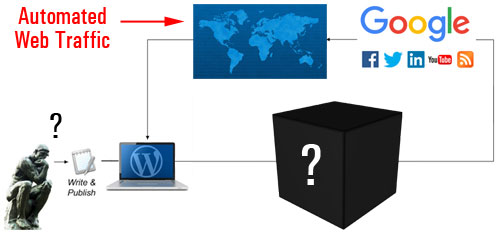
(The configuration phase involves more than just configuring a few settings in WordPress)
If all the steps involved in the configuration process were to be flowcharted, it would look like this …
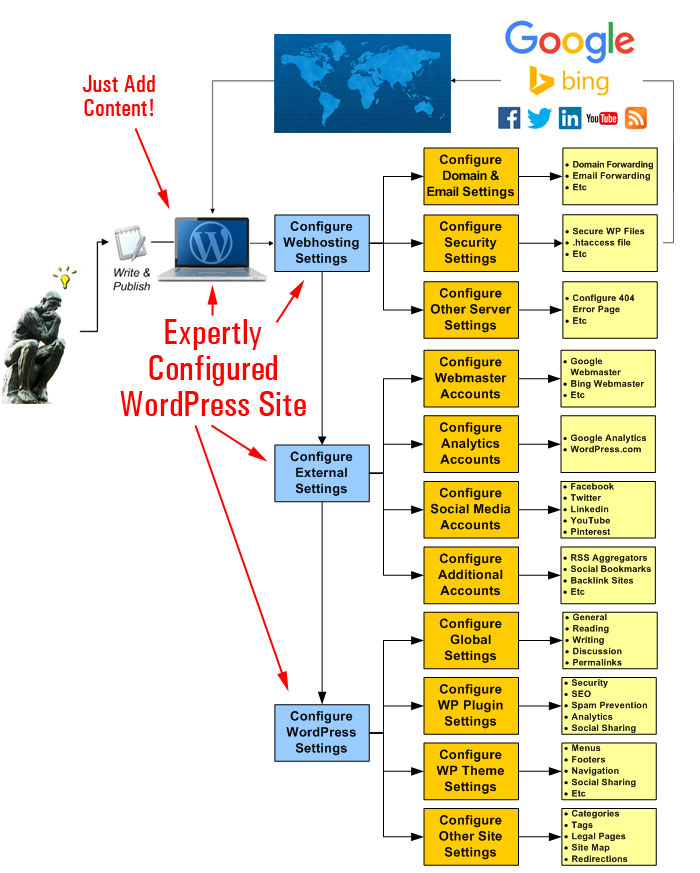
(A simplified flowchart of the activities involved in the configuration phase)
Let’s examine these areas.
Configuring The Web Server
We’re not talking here about the process of configuring your web hosting account for website installation purposes. We’re talking about fine-tuning settings and options in your server that affect how your site will handle web traffic …
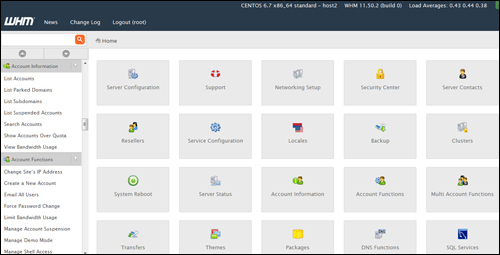
(In the configuration stage, your web server settings need to be checked for handling both good and bad traffic)
Not all traffic is positive traffic. Some of the traffic your business can attract will be unwelcome traffic like spam, malicious threats, bot-hacking attempts, etc.
This part of the configuration process, therefore, requires evaluating your needs, planning for bad and good traffic and adjusting settings in your server accordingly. This includes things like implementing server-level spam protection and security threat prevention, to configuring domain and email redirections, setting up htaccess and 404 redirections, etc …
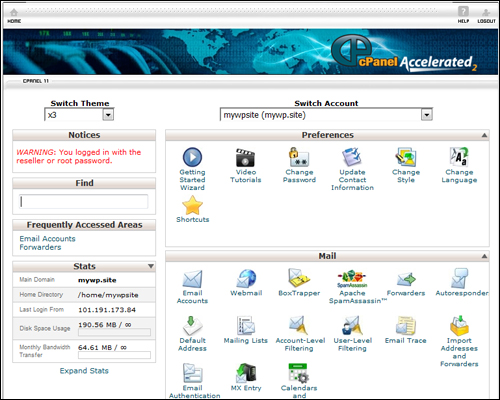
(Have you configured your control panel settings for handling things like email forwarding, page error redirects, etc?)
After checking your server settings and configuring these (if required), the next step of the configuration phase is to set up a number of third-party sites.
External Services
The concept behind adding external sites is that all content will get posted to one central location (your site) and from there, it will syndicate automatically to other parts of your traffic system, or notify traffic-related web properties and applications.
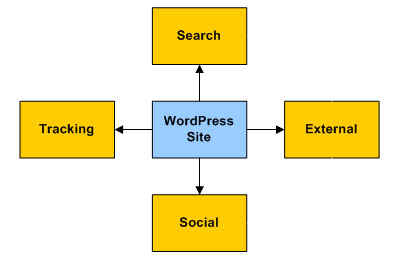
Once these external platforms have been added to your network, content with links pointing back to your site is automatically posted to search, social and aggregator sites. Your site will be given exposure to new audiences and new sources of traffic.
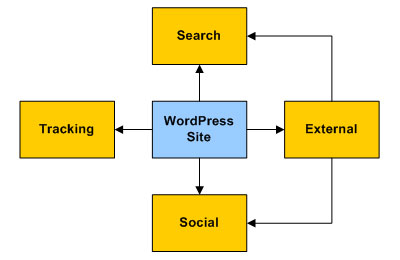
Some sites and services will need to have accounts set up before configuring your site to save time and some will need to be done later, during the automation phase.
For example, here are just some of the accounts you will need to have set up:
Google Search Console
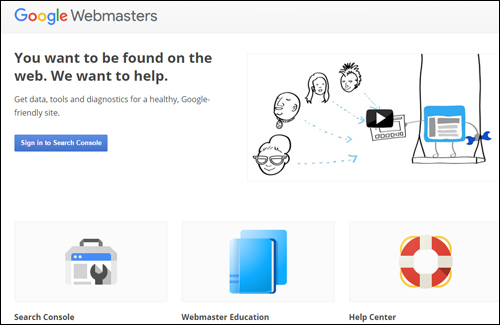
(Google Webmasters – create a Google-friendly website or blog)
Google Webmaster Tools lets you tell Google about your site’s pages, submit XML sitemaps for faster page indexing, and provides you with a range of important information, SEO tools and reports about your website.
After setting up your account and entering site details, you can use this information with web traffic settings and notifications in WordPress using plugins like Yoast SEO and other applications.
Google Analytics
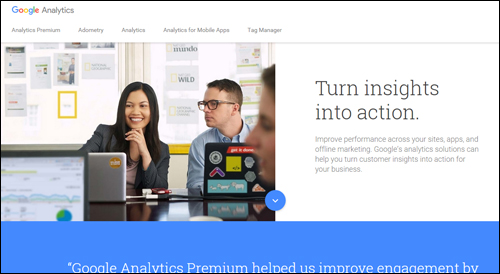
(Google Analytics)
Google Analytics lets you improve your website’s results, SEO, marketing activities, and more, by tracking all user engagement, pages visited, keywords searched for, organic referrals, etc.
After setting up your Once you have set up your Google Analytics account, traffic monitoring information can be easily integrated with WordPress using any of several Google Analytics plugins used with other applications and reporting tools.
Bing Data And Tools
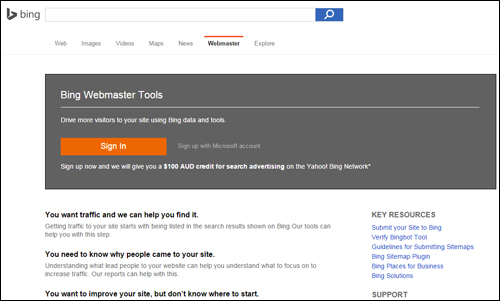
(Bing Webmaster Tools)
Bing Webmaster Tools is similar to Google Search Console. After setting up your account and entering site data with Bing, this information can be used with traffic-related settings in WordPress (e.g. using plugins like Yoast SEO – see further below) and other applications.
WordPress.com
(WordPress.com)
As explained in Part 2, WordPress offers users the option of a hosted vs self-hosted website. We recommended choosing the self-hosted WordPress version if you are planning to build a professional business presence online.
WordPress.com (the hosted option), however, provides some great features, which can be accessed by various WordPress plugins. We recommend setting up an account at WordPress.com, therefore, and we’ll explain how to integrate this into your traffic generation system in Part Four of this series.
Social Media Accounts

(Syndicate your content automatically to your social media and social bookmarking accounts and attract new visitors to your site)
You will need to set up your social accounts in order to integrate these with your traffic generation system.
Once you have set up and configured everything, you will be able to syndicate your content automatically to your social media and social bookmarking accounts and drive new visitors to your site.
Make sure you have set up accounts with all the popular social networks – Facebook, Twitter, Pinterest, LinkedIn, YouTube, etc.

There are lots of social sites you can post your content to. You don’t need to create accounts with all of them, just pick those that will work well with your setup and/or content syndication tools.
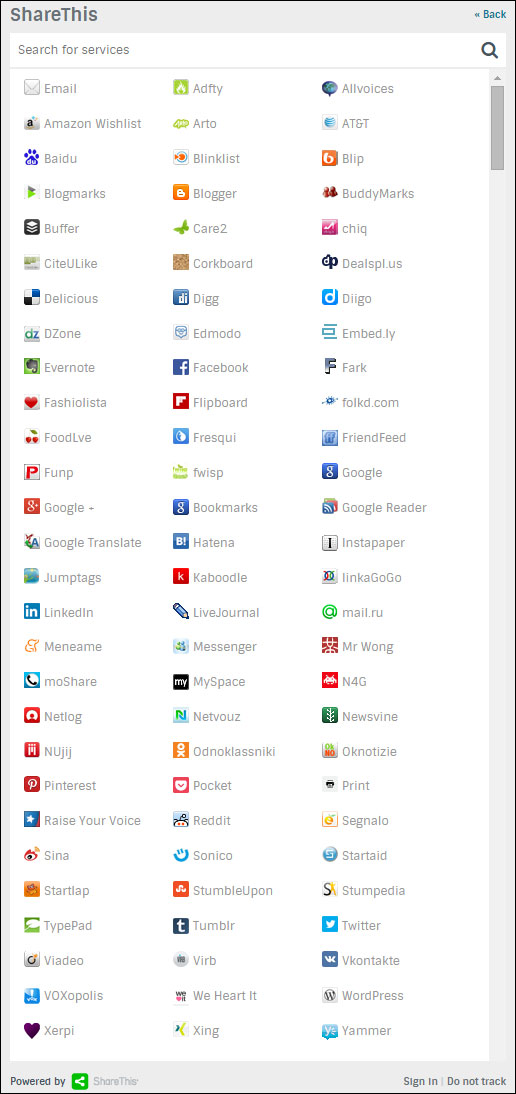
(There are many social bookmarking sites you can syndicate your content to. Image: ShareThis.com)
Additional Services, RSS Aggregators, Etc.
There are a number of emerging technology platforms and RSS aggregators that can serve as secondary traffic generation sources. Some are free or provide free accounts, and some offer a range of pricing plans to suit different users.
For example, here is a content aggregator site that lets you add a feed from your WordPress site …
RebelMouse
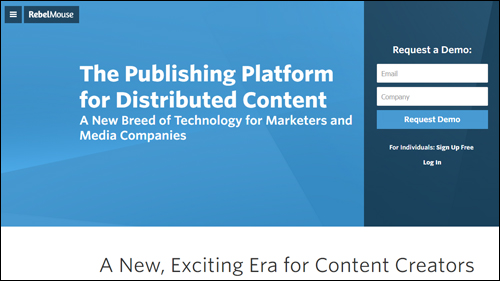
(RebelMouse)
RebelMouse is an aggregator for your RSS feeds and social profiles. Your content is displayed in a Pinterest-like format and users can follow your account.
![]()
There are many different sites and platforms you can incorporate into your own traffic blueprint. Please contact us if you would like to explore your options and discuss a configuration strategy to suit your needs.
After you have configured your web server and set up third-party service accounts, it’s time to configure your WordPress settings.
WordPress – Configuring Your Website Or Blog For Traffic
The first step in configuring your site for traffic is to make sure that its global settings have been correctly set up.
Let’s go over some key areas.
Global Settings – WordPress
The WordPress administration area contains a Settings section that allows you to set up your site’s global settings …
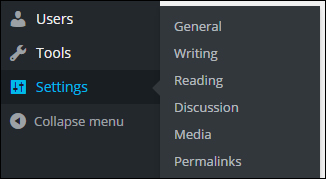
(WordPress settings section)
General Settings
Sections like Site Title and Tagline can influence your site’s SEO, search indexing, etc …
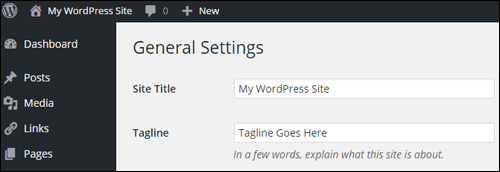
(WordPress Settings – General Settings Section)
Writing Settings
The Writing Settings section contains one of the most important and frequently overlooked automated traffic notification systems available to WordPress users …
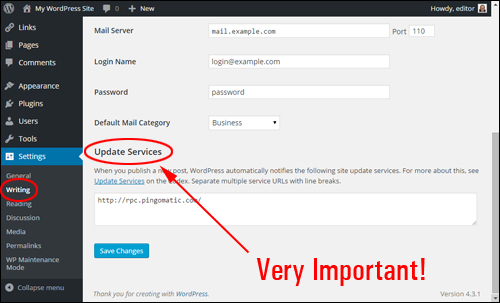
(Settings Menu – Writing Settings)
As stated in this section,
When you publish a new post, WordPress automatically notifies the following site update services …
Unless you or your webmaster have intentionally configured your site settings to prevent search engines from indexing your site, then your site will automatically notify the list of update services entered into the Update Services field
By default, only one service is listed …
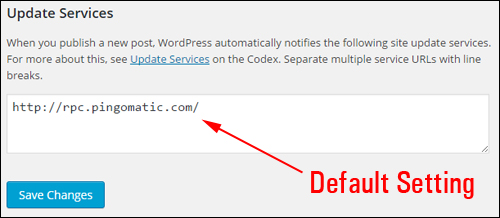
(Writing Settings – Update Services)
WordPress lets you notify dozens of update services automatically – just add a list containing all of the update services you want notified to this section and WordPress will do the rest …
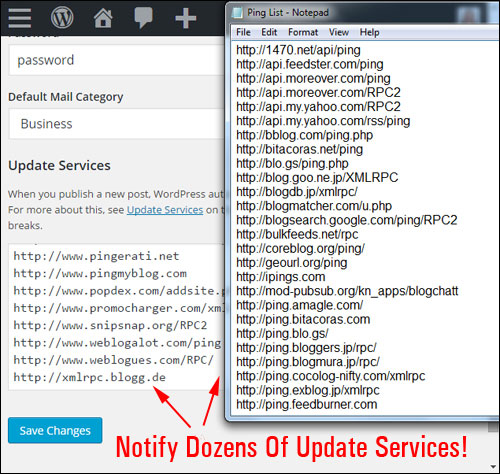
(You can notify dozens of update services automatically with WordPress!)
![]()
Download A Comprehensive List Of Ping Services For Your WordPress Site!
Click the link below to download a comprehensive list of reliable and authoritative ping services for your WordPress site or blog:
Download A List Of Ping Services For Your WordPress Site
***
Note: If you need help setting up the list of ping services on your site, we recommend using a professional web services provider. You can find professional WordPress service providers in our WordPress Services Directory.
Reading
This section affects how your content gets seen by readers when they visit your home page and blog pages.
The syndication settings on this page can have an influence traffic. For example, choosing to display the full text vs summaries of your post, affects how your content displays to users in RSS readers and RSS email campaigns, and could play a part in someone’s decision to explore your content further, and whether or not they will visit your website to view the rest of the content from a partial feed, or read the content in full without the need to click through to your site.
The main setting in this section as far as traffic is concerned is whether the Search Engine Visibility checkbox is enabled or not.
Typically, you want to encourage search engines to visit your site. Leaving the box unchecked allows your site to instantly notify all the update services you have listed whenever a new post is published (see Writing Settings above). Unless there is a specific reason why search engines should not visit your site, do not check this box …
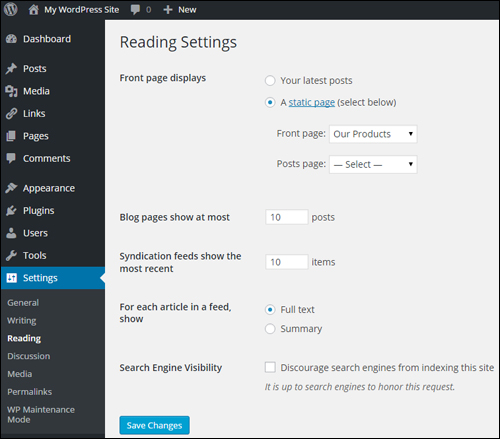
(Settings Menu – Reading Settings Section)
Discussion Settings
Although the settings in this section are mostly concerned with how users engage with content on your site, you have the option to allow notifications to sites linked to from your content, and to allow link notifications from other blogs (pingbacks and trackbacks). This can work for you, but it can also drive bad traffic in the form of SPAM comments …
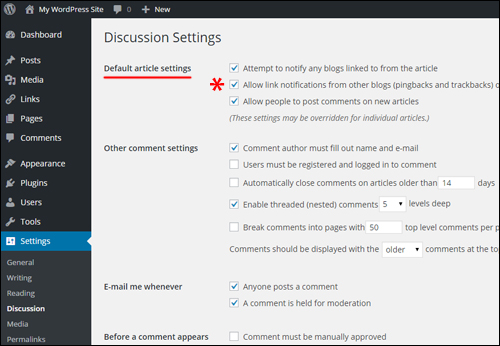
(WordPress Settings – Discussion Settings)
Permalink Settings
Your Permalink settings allow your site to display posts with search engine-friendly URLs …
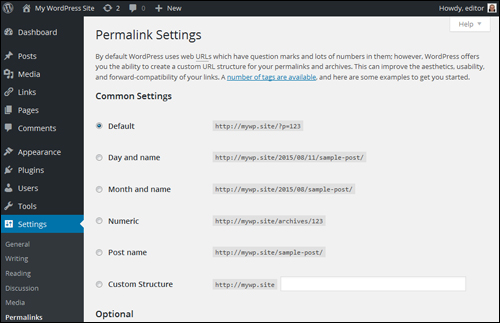
(Settings Menu – Permalink Settings Section)
The examples below show some of the options for configuring your site’s permalink URLs …
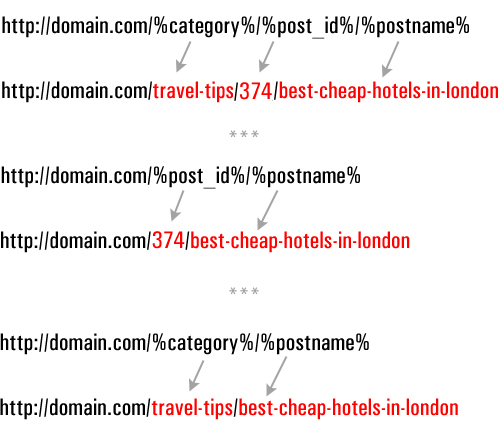
(Configuring SEO-friendly URLs)
If you need help setting up permalinks in WordPress, go here: Using Permalinks To Improve Your WordPress SEO
Configuring Settings – Plugins
The WordPress developer community makes available thousands of plugins that help to add almost every type of functionality to your site, including plugins with features that help to improve traffic generation.
Let’s look at some types of plugin categories that affect traffic and plugin examples
Security Plugins – Blog Defender
Once again, it’s important to configure your WordPress site for handling both good traffic and bad traffic. No matter what type of business you run or plan to run online and how small you think your web presence is, you simply cannot ignore the importance of securing your website or blog.
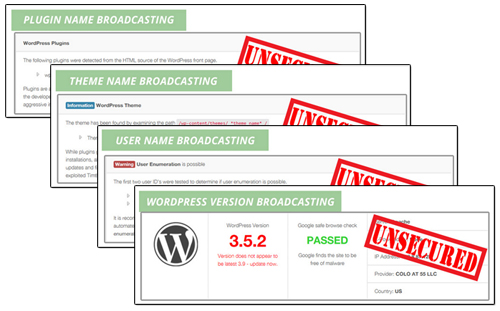 (Security Plugins help prevent bad traffic from causing your website harm)
(Security Plugins help prevent bad traffic from causing your website harm)
Security plugins like Blog Defender help to make your blog invisible to attacks from hackers and botnets.
More information:
SEO Plugins – Yoast SEO
WordPress SEO plugins help drive traffic by making your web pages more indexable …

(SEO plugins like Yoast SEO help drive traffic by improving your site’s SEO)
A plugin like Yoast SEO can significantly improve your SEO. Properly configured, the Yoast SEO plugin not only makes your site easier for search engines like Google and Bing to index, it also lets you specify how to present your content in Google’s search results and social media sites Facebook, Twitter, and Google+.
WordPress Social Sharing Plugins
Allowing your visitors to share your content online can help boost traffic to your site, especially if your site provides great content that adds real value to readers.

(You can add social sharing features to your site easily using free or inexpensive plugins)
You can add social features to your site easily using WordPress plugins.
Most social sharing plugins allow you to choose which sites your content can be shared to, embed social buttons into your content, set up custom notifications, display/hide share counters (e.g. number of likes), etc. Some plugins even allow you to set up protected content areas on your site which users can unlock by linking or tweeting your page.
Configuring WordPress Theme Settings For Traffic Generation
As well as configuring various plugins, many WordPress themes also include features that help grow your site’s traffic.
For example, in addition to options and settings for configuring layout and design elements of your website, some themes also provide options for improving SEO and site linking structure for better indexing, add analytics, social sharing buttons, etc …
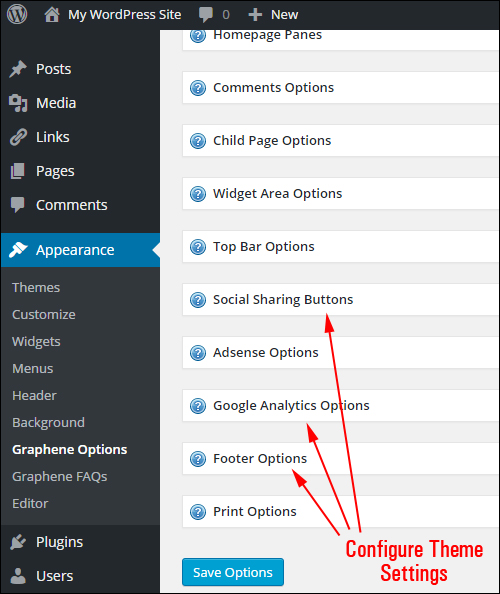
(Many themes like Graphene (a highly customizable free theme) come with built-in traffic optimization features)
With many quality themes, adding social sharing features to your pages is as easy as clicking a button …

(Many WordPress themes come with built-in social sharing features)
Additional Configuration Steps For WordPress
Last (but by no means least) in the traffic configuration process, are the elements that need to be configured outside of the global settings.
This includes the following:
Compliance Web Pages
Once again, when preparing your site for an increase in traffic numbers, it’s important to plan not only how to handle good and unwanted traffic but also for all the things that can go wrong as more and more people start finding and visiting your website.
If you make money online (or plan to), it’s important that your site is found to comply with legal requirements of government agencies that regulate online business practices.
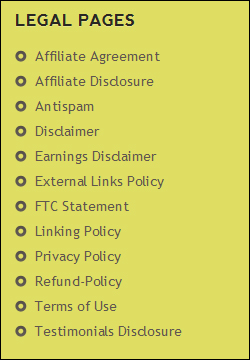 (Does Your Site Comply With The Law?)
(Does Your Site Comply With The Law?)
If you need help adding legal pages to WordPress, go here:
Post Categories And Tags
Post categories and tags help improve traffic by improving your site’s search engine optimization.
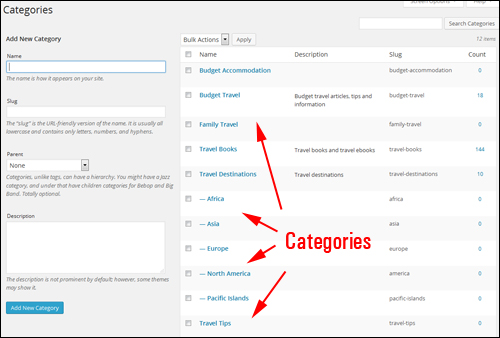
(WordPress post categories help to improve your site’s search optimization, which improves traffic.)
As we recommend in this article, it’s best to set up your site’s post categories and tags earlier on, during the Website Planning Stage.
In the configuration phase, you will want to review and make sure that the categories and tags you have set up.
Add A WordPress Site Map
A site map that lists all of your site’s pages and posts to visitors is not only a useful navigation tool for users, it can also help external tools find your website content …
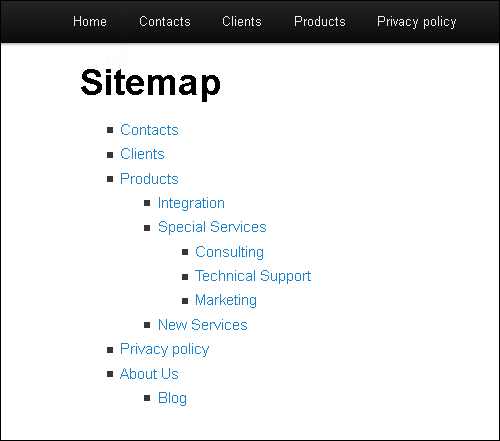
(Site Map – great for visitors and beneficial for web traffic too!)
![]()
An HTML site map and an XML sitemap are not the same thing. An HTML site map is a web page that links to all other content on your site, whereas an XML sitemap is mostly code that only search bots can understand. Although search engines like Google will index your site just from an XML sitemap (which plugins like Yoast SEO will create for you – see earlier section), allowing visitors to find more pages on your site can result in increased traffic.
Your Site’s 404 Page Not Found
When visitors searching for your website type in the wrong web address or click on an invalid link, they will normally be presented with a 404 error page …
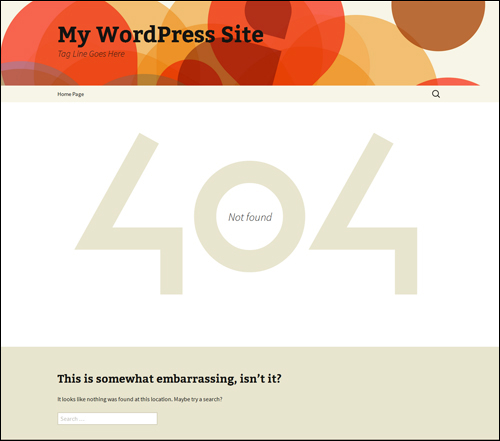
(Default WordPress 404 Not Found error page)
A 404 Error Page can redirect confused visitors to your functional web pages …
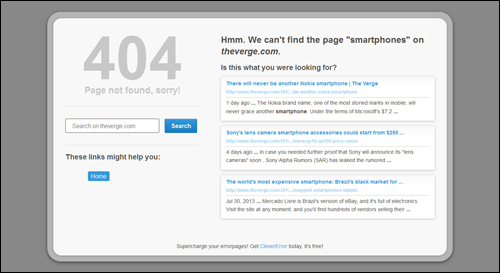
(Configuring your 404 Error Page allows you to redirect web traffic that may otherwise be lost.)
![]()
Although a 404 error page can be set up in your web server, there are several WordPress plugins that let you easily configure your 404 page from your WordPress dashboard.
WordPress Traffic Automation System: Configuration Stage – Summary
Once you have your site expertly configured and fully set up, all you have to do is publish content on a consistent basis to attract more web traffic.
The process of expertly configuring a WordPress site, however, can be quite involved , requiring the configuration and integration of different components and external web properties …
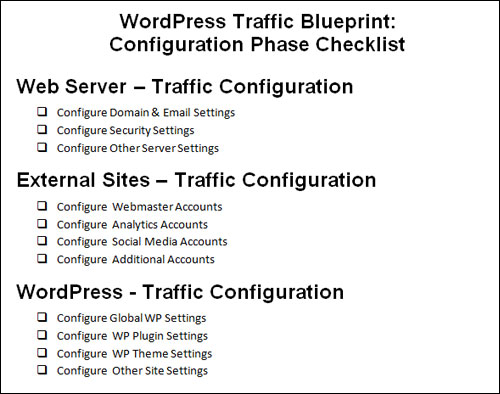
(WordPress Traffic System – Configuration Checklist)
![]()
The skills and expertise involved in expertly configuring a WordPress site can take many website professionals months to learn.
Once you have expertly configured your WordPress site, the next step is to automate the process. This step is covered in the next article in our series.
This is the end of Section Three
To read more, click here:

![]()
This article is part of an tutorial series designed to help you learn how to grow your business online inexpensively with a WordPress-driven website and proven marketing methods that are easy to implement.
Subscribe To Our Site And Get Notified When New Tutorials Get Published!
***
"I love the way your email series "Infinite Web Content Creation Training Series" is documented and presented. It is very absorbing and captivating. The links and tutorials are interesting and educational. This has motivated me to rewrite my content following the concepts I am learning from the email series." - Mani Raju, www.fortuneinewaste.com
***

